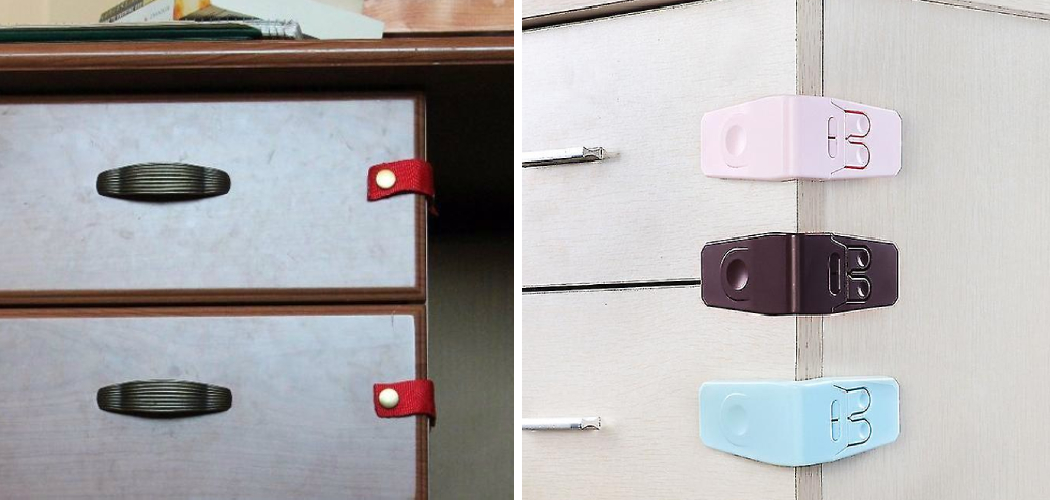Do you ever worry that something valuable may be stolen when you are away from home? Or maybe even something like your personal identification documents? To proactively protect yourself and your possessions, an often neglected measure is to lock dresser drawers. Locking drawer storage can provide peace of mind and give an extra layer of security for the items stored in them.
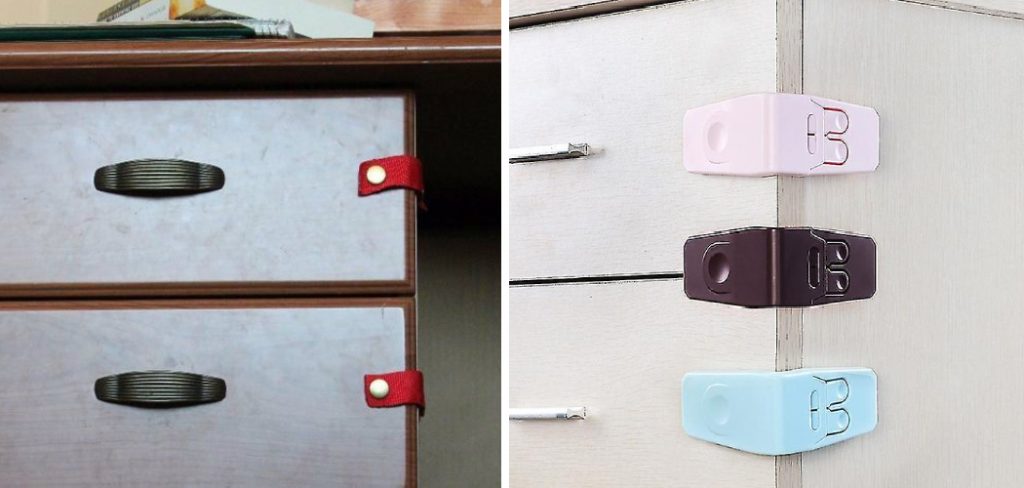
In this blog post on how to lock dresser drawers, we’ll show you how to effectively install locks on a variety of dresser sizes so that no other person will have access to your belongings but you!
Needed Tools and Materials
Given below is the list of components that you will need to install locks on dresser drawers.
- A Drill Device (for Screws)
- Screws and Anchors
- Appropriate Lock Type for Your Requirements (E.g., Keyed, Combination, or Electronic)
- Hacksaw Blade (to Cut the Keyhole Slot)
- Measuring Tape
- Pencil or Marker (to Mark the Drilling Holes)
- Appropriate Lock Installation Device (E.g., Mortise, Cam, or Rim)
- Sandpaper
11 Step-by-step Guides on How to Lock Dresser Drawers
Step 1: Measure the Dimension
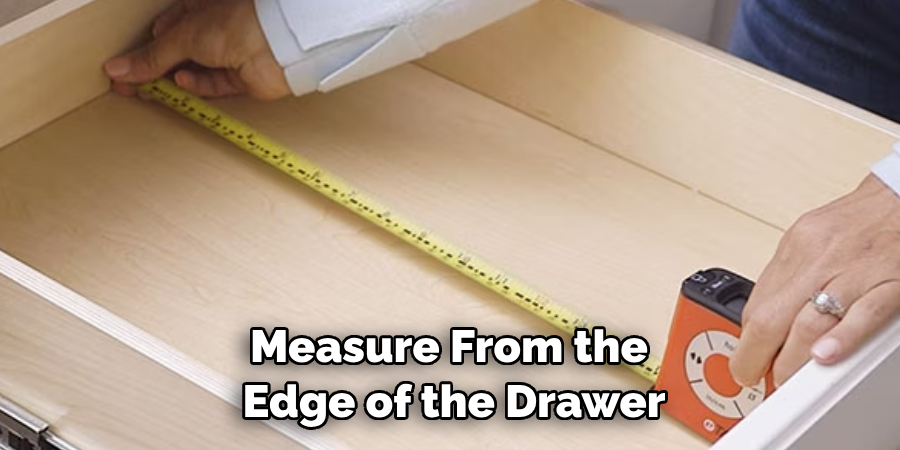
Measure and mark where to place the locks on the drawer’s front face. Also, measure from the edge of the drawer to the center of the lock’s bolt. This will help you determine where to place the locks on the dresser, and this measurement should be done for each lock that you plan to install. It’s important to use a measuring tape and make sure that the measurements are accurate.
Step 2: Drill Holes in Place
Mark and drill holes in place for locking device installation. For smaller drawers, just one hole may be enough whereas for larger drawers, two holes should be drilled. But, you can also drill holes for multiple locks if needed. This step helps to ensure that when we install the locks, they are in the right spot and easy to open. If the holes are drilled too close to each other, they can interfere with the functioning of the locks.
Step 3: Smooth Out the Surfaces
Smooth out the area where you plan to install locks using a bit of sandpaper. This will make sure that the surface is even and free from any dust or dirt particles. You don’t want any dirt or debris interfering with the functioning of the locks. But, make sure that you don’t sand too much as it could damage the surface. This step will also help to make sure that the locks are installed securely.
Step 4: Install the Lock’s Bolt Mechanism
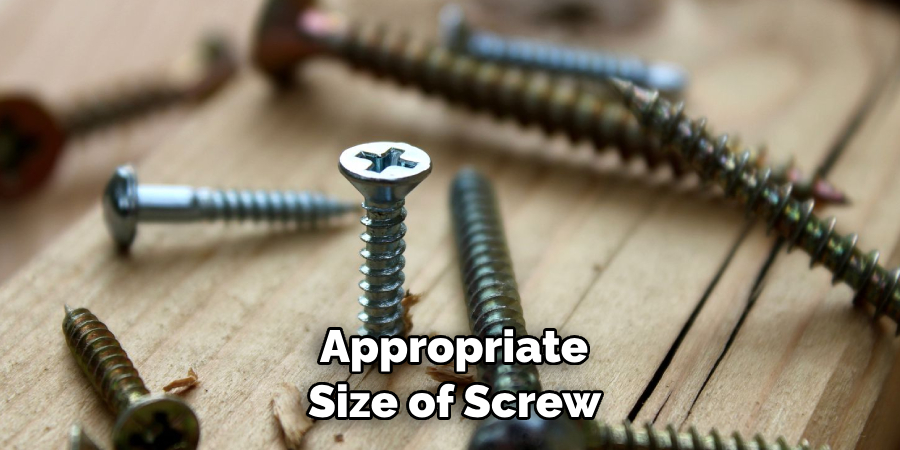
Once the holes are drilled, insert the bolt mechanism into the hole and then secure it with screws. Make sure that you use an appropriate size of screw depending on the size of your lock device. Otherwise, the screws may not hold in place and your lock may come off easily. Additionally, you may need to use anchors for larger locks which will provide more support and make sure that the bolts stay securely in place.
Step 5: Attach Plate to Drawer
Using anchors, attach a metal plate to the backside of the drawer. This will help to keep the lock device in place once it’s installed. It’s important to make sure that the plate is secured tightly so that it can hold the lock in place. It’s also important to make sure that the plate is even with the surface of the drawer. But, if the plate is not even, then the lock may be difficult to close.
Step 6: Thread the Lock Device into Place
Once the plate is attached, thread the lock device onto the front side of the drawer, making sure that it is aligned with the holes that were drilled earlier. However, depending on the type of lock that you are using, the installation process may vary slightly.
But, make sure that the lock is securely and evenly in place before moving onto the next step. It’s also important to make sure that the locks are aligned properly otherwise they may not work correctly.
Step 7: Secure the Lock Device
Secure the lock into place using a suitable installation device. Make sure that it is securely fastened and can rotate freely when opened or closed. But, if the lock is not properly installed then it may become loose with time and can even cause damage to the drawer. If you’re using a mortise lock installation device, make sure that all of the components are aligned correctly before moving onto the next step.
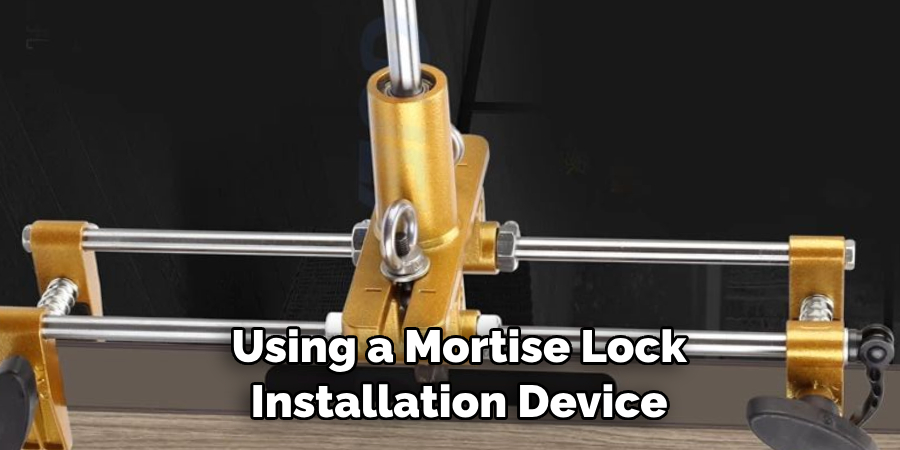
Step 8: Cut the Keyhole Slot
Using a hacksaw blade, cut a keyhole slot in the dresser’s side panel. This will make it easier for you to insert the key or combination code into the lock. If you’re using a keyed lock, the slot should be cut in the same direction as the bolt mechanism. But, if you’re using an electronic or combination lock then there is no need to cut a keyhole slot.
Step 9: Install the Lock’s Keyhole Cover
Once the slot is cut out, install a cover on top of it using screws. This will keep any dirt or dust from entering the keyhole and ensure that your lock device remains secure. But, make sure that you’re using the appropriate screws and anchors for this step. This will make sure that your lock is securely in place and can resist any force.
Step 10: Test the Lock
Once all the steps are completed, test the lock to make sure it is working properly. Insert the key or combination code and try to open and close the drawer several times. Make sure that it opens and closes smoothly without any difficulty. It’s also important to make sure that the lock is properly aligned with the holes in the front of the drawer.
Step 11: Use a Lock for Each Drawer
For maximum protection, use a lock for each drawer in your dresser. This will ensure that all of your items are securely locked away and inaccessible to anyone but you! Always make sure that you are using high-quality locks and that they are properly installed. This will ensure that your items stay safe and secure in case of any intruders or theft attempts.
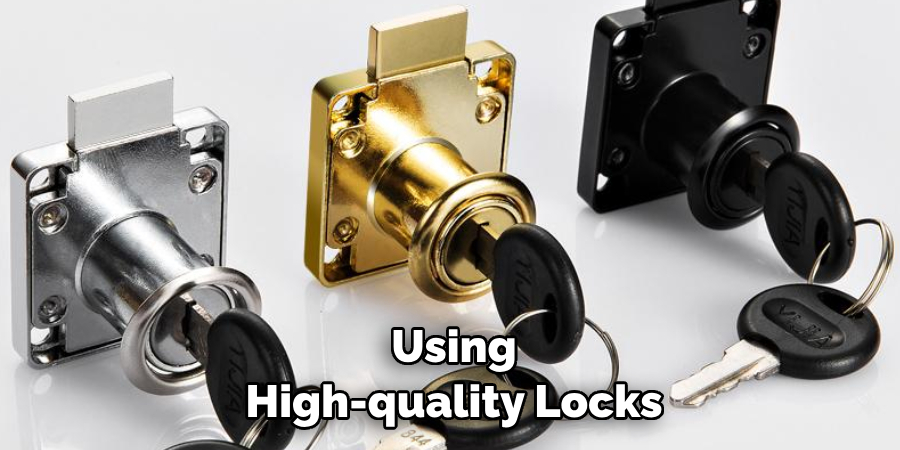
Following these steps on how to lock dresser drawers will ensure that your dresser drawers are properly and securely locked. You can rest assured knowing that your valuables and important documents are safe from any intruders! With the appropriate locks in place, you can keep your items safely stored away, giving you peace of mind.
Tips
- Always use the appropriate screws and anchors for your lock device to ensure that it is securely fastened.
- Make sure to cut the keyhole slot in the correct size, as an overly large one can cause difficulty when inserting/removing the key or combination code.
- Test the locks regularly to make sure they are working correctly and remain secure.
- Make sure to store the keys or combination codes in a safe place. Keep them away from prying eyes and out of reach of children.
- Consider investing in high-quality locks for added security and durability.
- If you are not comfortable with installing the locks yourself, hire a professional service for assistance. They can provide expert advice on the best locks to use and make sure they are installed correctly.
Locking dresser drawers is an often neglected measure that can offer an extra layer of security for your items. Following these steps will ensure that all of your drawers remain locked and secure, so you don’t have to worry about any unauthorized access. With the right installation methods, you can keep your possessions safe and give yourself peace of mind.
Frequently Asked Questions
Q1: What Are the Benefits of Locking Dresser Drawers?
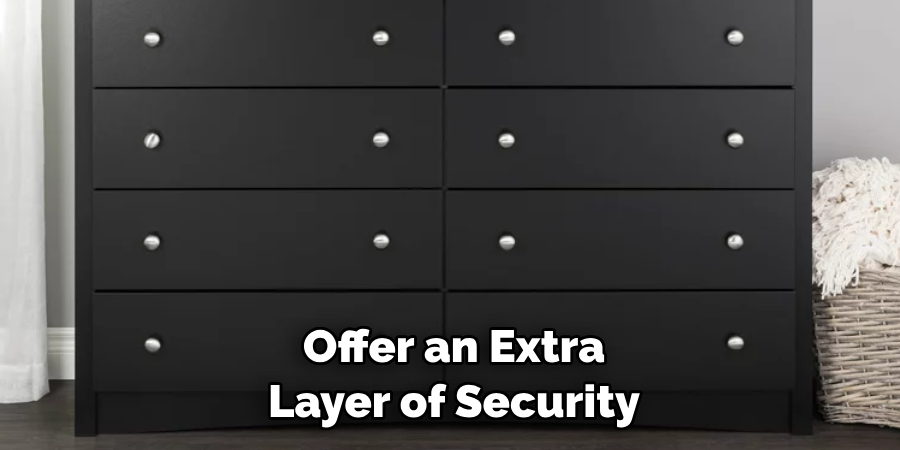
A1: Locking dresser drawers offer an extra layer of security for items stored in them, ensuring that only authorized persons have access to them. It also helps protect against theft or other unwanted intrusions. In addition, it can also help to prevent children from accessing dangerous items or medicines that are stored in the drawers.
Q2: What Are the Different Types of Locks That Can Be Used on Dresser Drawers?
A2: The most common types of locks used for dresser drawers are keyed, combination, and electronic locks. Keyed locks require a physical key to open and close them, while combination and electronic locks make use of numerical codes or voice recognition technology respectively.
Q3: What Kind of Installation Device Should I Use for Installing Locks on Dresser Drawers?
A3: The type of installation device you will need depends on the type of locks you are using and the size of your dresser drawers. Generally speaking, screws or anchors should be used to secure the locks in place. It is important to make sure that these devices are appropriate and compatible with the locks that you have chosen.
Q4: How Often Should I Test My Locks?
A4: It is important to test your locks regularly to ensure that they are still in good working condition. Inserting a key or combination code and checking if the drawer can open and close without any difficulty will give you an indication of whether the lock needs to be replaced or adjusted. Testing your locks at least once every few months is recommended.
Locking dresser drawers is a great way to keep your belongings safe and secure. With the right locks, installation methods, and regular testing, you can ensure that they remain in good working condition and offer maximum protection for all of your items.
Conclusion
To conclude, if you have a dresser with drawers that you’d like to keep secure, there are numerous easy and cost-effective ways of doing so. Whether it’s hooking up a lock or using a padlock, adding some extra security to your dresser drawers will go a long way in protecting whatever belongings you are inside. With that said, don’t let the dangers of an unlocked drawer keep you from keeping your belongings somewhere safe.
Instead, find the perfect solution for your dresser drawers as soon as possible and help safeguard yourself against any potential harm. Our advice? Don’t wait any longer – keep your dresser drawers locked and secure today! Thanks for reading this article on how to lock dresser drawers.

